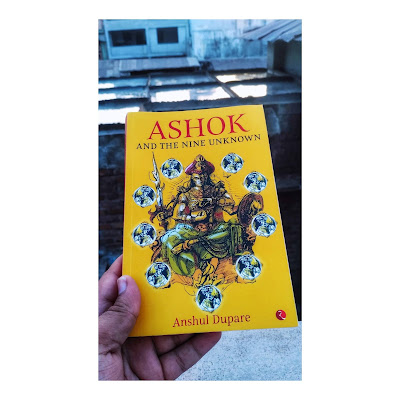Review Summary
The Genius of
Indraprastha by Harshwardhan is the first book in the Gondwana Chronicles, a
historical science fiction novel set in Gondwana, a fictitious and exceptional
world built by the author, a simplified version of ancient and medieval India, integrating
the prominent aspects of two periods – the Vedic age, and the period that followed
after the earliest Arab naval expeditions and their conquests in the Indian
subcontinent; constituting the elements like science, Vedic practices, invasion,
and warfare the book draws attention to the potentiality of the knowledge that
if it can save you from the enemy, the enemy can use the same knowledge to annihilate
you; revolving around the central conflict between Khidmatgars (invaders) and
the native tribes of Gondwana, the narration introduces you to two formidable
characters, each serving their own purpose in the best way possible; this fast-paced
thriller story of innovations, conscientiousness, and conquests will find you absorbed
throughout the journeys of both protagonist as well as the antagonist.
Review
Let me start with the
world building and setting aspects of the book. The world or the land of
Gondwana is fascinating in its own way. The author has tried to convey the
demographics and geographical traits of the land effortlessly via this fictional
land, where the native tribes – Aryans (who of course came from the north),
Vaishyas, Garudas, Waanars, and Asuras – are united against the invaders,
Khidmatgars. Apart from this broader picture, the setting makes justice to the
Vedic age of ancient India through science and inventions. The one particular
detail that stands out is the well-organised political geography of Gondwana
and there is also a map of contemporary India with reference to the world of
Gondwana, which is the best thing you could ask for in such historical fiction
novels.
Moving to the background
of these tribes and emerging characters from them. The author has depicted the
background, history, and significance of these tribes very conveniently. The
sequences are interwoven in the non-linear narration in such a way that it
gradually introduces to you the principal kingdoms of Gondwana including
Khidmatgar territories, how they function, and their frontliners in the
divisions of education, military, and politics. Bakht Khan is the Commander of the
Khidmatgar army and Prince Martand of Indraprastha is that genius the title is
indicating. After successfully conquering a few of the Gondwana kingdoms belonging
to all tribes except for Aryans, the Commander is set to defeat the Aryan
kingdom, Indraprastha. On the other hand, Prince Martand is fully aware of what
is to come and he knows that an appropriate retaliation is a must to save his
tribe. The portrayal of these characters along with Rishi Sambhuvahana and his
disciples makes the book even more interesting.
There are two main themes
that occur in the novel – invasion leading to battles and a war which provides
the central conflict for the novel, science and invention. The author has profoundly
dealt with the conflict and warfare aspects. The ideation of Saptasindhu
Mandal, inclusion of ancient texts like Manusmriti plays a great role in the
storyline. The book also gives space to the powers our ancestors possessed in
the eras of Lord Rama and Lord Krishna, in the form of scientific inventions.
Other than that, the author comically takes on feminism in the patriarchal
period. The plot has a thrilling effect to it. It ensures that the reader doesn’t
lose interest. The writing style and language is basic, which makes it an easy
read.
While I revered the plot,
world building, and the characters, I detested a few things about the book. The
book surely makes you feel the presence of important female characters, but I
think there’s not enough women representation. Secondly, the phrase which is
repeated often in the book – ‘knowledge is invaluable’ – is only associated
with the knowledge of weapons, making its very idea vague and uncertain, after all,
it is not the only kind of knowledge the story involves. Besides, the
protagonist has a very short role to play in the storyline compared to the
antagonist. Apart from these flaws, I found The Genius of Indraprastha an interesting
and unique tale where the legends of ancient India are accredited with providing
invaluable scriptures, not literally, but symbolically.
Happy Reading!














